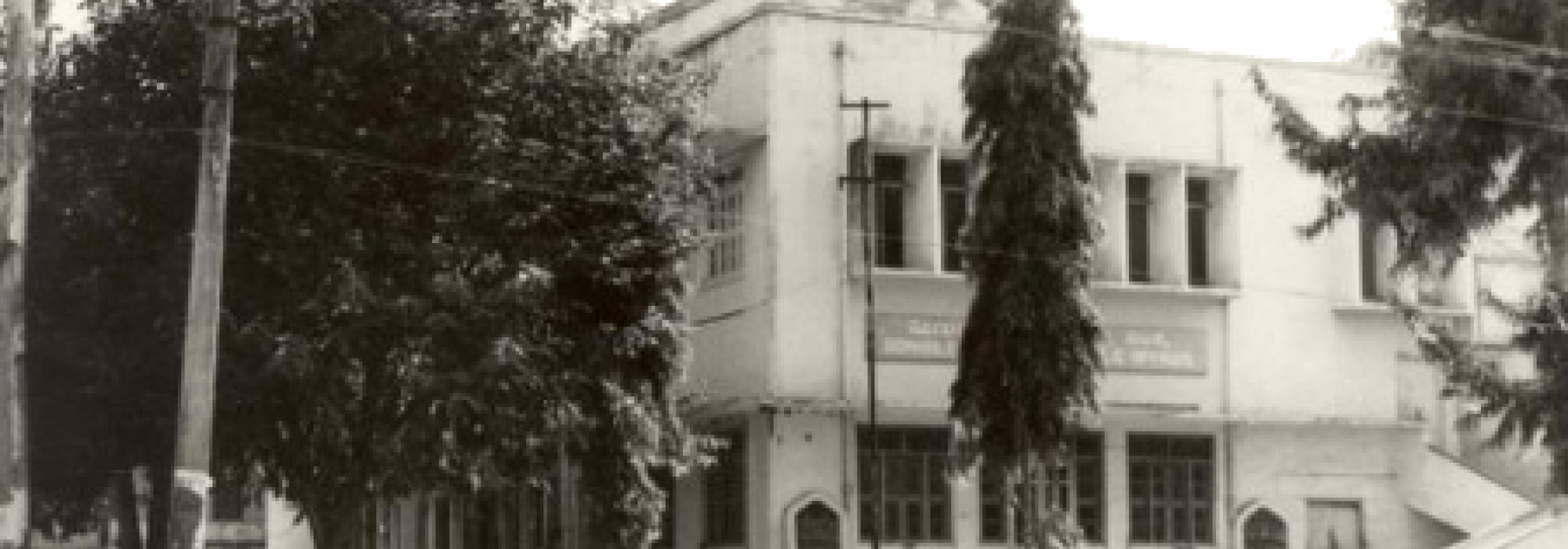rāṣṭraṃ vā aśvamedhaḥ…
– Yajurveda (Taittirīya-brāhmaṇa 3.8.9)
kalpate ha vai tatra prajābhyo yogakṣemaḥ
yatraitena yajñena yajante– Yajurveda (Taittirīya-brāhmaṇa 3.8.13)
The nation itself is the Aśvamedha (aśva represents the State)... with that both gain (yoga) and well-being (kṣema) of the citizens are achieved…
Just about thirty years ago, in 1939, during Sir Mirza Ismail’s tenure as the Dewan, the erstwhile government of Mysore appointed a committee to make appropriate recommendations to facilitate political reforms. The President of the committee was K R Srinivasa Iyengar. Amongst its members were those experienced in administration such as N S Subba Rao, S Hiriyannayya, and Rao Bahadur M C Ranga Iyengar; Smt. Rukminiyamma, who had been an Officer of Education and others who had rich experience in public affairs; Jenab Mohammed Imam, Jenab Haneef, and many other such notables. When the committee submitted the report, I expressed reservations about it through my comments, which included the following suggestions –
1. The government should immediately approve and declare the ‘Responsible Government’ itself as the objective of Mysore’s progress.
2. The government should be committed to make appropriate preparations towards achieving the previously mentioned goal within ten years.
Excitement of the Mob
Today, both the report and the suggestion are things of the past. Many things over and beyond them have happened. However, a question that a few people used to ask me around then has remained unanswered till date.
Mahatma Gandhi himself had become the leader in great haste. The very next day after the riots at Vidurāśvattha, he sent a telegram to Dewan Mirza stating: “Please transfer the powers to the ‘Responsible Government’ at this very instant. People have now proven that they deserve it.” What does this signify? Doesn’t it mean that the mob’s excitement proves their merit?
Long before 1939, the protests that were being organized in the name of ‘Responsible Government’ were quite strong. The riot at Sultanpet (1928), the riot at Vidurāśvattha, and many such incidents were part of that very agitation. During those days in British India, political activism was quite intense, wasn’t it? As a result of Mahatma Gandhi’s inspiring influence, that giant revolution spread across multiple dimensions. If the atmospheric pressure in the Bay of Bengal along Madras causes clouding as a result of which if it starts to drizzle, can the weather in Bangalore escape its effect? This is how the agitation of the Congress supported the activism in Mysore. Since the Mirza government sensed the pressure of this atmosphere, we can conclude that the aforementioned committee was appointed.
Well-wishers’ Questions
Hundreds of great people who were neither associated with the Congress nor with any other movement used to ask us a question in a friendly tone. The very fact that there were, during those days, such great well-wishers with no affiliation to any political party but concerned solely for the State’s well-being is exceptional. One such exemplar was K P Puttanna Chetty; there were many lawyers from the yesteryears too. In today’s day and age, if at all such remarkable and unbiased public personalities exist among us, I believe that their number will be no more than the fingers on one’s hands.
These are the questions they posed: “What is the lacuna now? In what facets does our State suffer from deficiencies? What corrections will satisfy you?”
When people posed such questions, at least I used to feel a lump in my throat. Should we complain that the taxes are high? Should we say that the State is extremely corrupt? Should we remark that the people in authority are fools? Should we say that the judiciary lacks clarity? I am not able to find anything particular that I can point my fingers at and criticize the State. There may be a few trivial shortcomings. What system of government doesn’t have such minor flaws? All such institutions run by human beings will certainly have such disorders. Ignoring these small shortcomings, if the larger picture is observed, the Mysore State of those days wasn’t in any way lesser than any other kingdom of British India. Rather, in many aspects it was advanced and used to be a guiding light for others. These were the things we had felt in our hearts to have been true.
Our Response
But we have already stirred up a movement, haven’t we? Can we concede that our noise was baseless when we face a question? There is a Kannada proverb that roughly translates into ‘A husband who despises you, would find stones even in curds.’ That was our only resort. We said, “We don’t have Citizenship Rights” – meaning, ‘We don’t have the fundamental rights that a citizen recognized by a nation would have.’ What does it mean? For example, there is a law that controls the press. That curbs the freedom of citizens. Secondly, the Executive Council doesn’t have a representative elected by the citizenry. Thirdly, the citizens don’t have any authority over the Government’s budget. Fourthly, we don’t have any authority whatsoever over the administration of the Government of India. Currently, it is futile to call ourselves the citizens of India. We should have a say in India’s politics. Fifthly, the level of our High Court’s authority is not sufficient. We need another court above the High Court to file appeals.















































